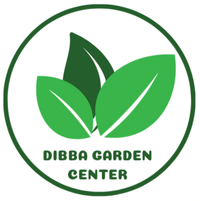Heliconia Psittacorum, Parakeet flower, Parrot’s beak
Aed 120.00
In stock
1
Product Details
Botanical Overview
Heliconia psittacorum, commonly known as the Parakeet Flower or Parrot’s Beak, is a striking tropical plant within the Heliconiaceae family, closely related to bananas and gingers (order Zingiberales). Its genus name, Heliconia, derives from Mount Helicon in Greek mythology, while the species epithet psittacorum (Latin for "parrots") references the vibrant, beak-shaped bracts that evoke the vivid hues of parrots and parakeets.
Description
- Leaves: Large, banana-like, glossy green, arranged alternately on erect stems.
- Inflorescence: Distinctive upright bracts (modified leaves) in vibrant hues of red, orange, yellow, or pink. The bracts are slender and tapered, resembling a parrot’s beak or parakeet’s plumage.
- Flowers: Small, tubular true flowers nestled within the bracts, typically yellow or green with a black tip, rich in nectar.
- Habitat & Distribution
- Native Range: Tropical Americas (Caribbean, Central, and South America).
- Preferred Environment: Thrives in humid, warm climates with well-drained, fertile soil. Prefers partial shade but tolerates full sun with adequate moisture.
Cultivation
- Propagation: Via rhizome division; clump-forming perennial.
- Growth: Reaches 3–6 feet (1–2 meters) tall, suitable for tropical gardens or containers.
Care Requirements:
- Watering: Regular, but avoid waterlogging.
- Soil: Rich in organic matter; pH 6.0–7.0.
- Fertilization: Balanced or potassium-rich feed to enhance blooming.
- Pruning: Remove old leaves and spent blooms to encourage growth.
Ecological Role
- Pollinators: Attracts hummingbirds and butterflies with its bright bracts and nectar.
- Ecosystem: Provides shelter for small fauna in tropical understories.
Uses
- Ornamental: Popular in landscaping and as cut flowers due to long-lasting blooms.
- Cultural Significance: Symbolizes tropical elegance; used in festivals and floral art.
Challenges
- Pests/Diseases: Susceptible to spider mites, aphids, and fungal issues if overwatered.
- Environmental Sensitivity: Intolerant of frost; requires protection in non-tropical zones
Varieties
- Cultivars: ‘Andromeda’ (red and yellow bracts), ‘Choconiana’ (orange-red), and ‘Sassy’ (pink tips).
Safety Note
- Toxicity: Limited data; cautious placement around pets advised.
Symbolism
- Represents vibrancy, exotic beauty, and a connection to tropical paradises.
Save this product for later
Heliconia Psittacorum, Parakeet flower, Parrot’s beak
Display prices in:AED

